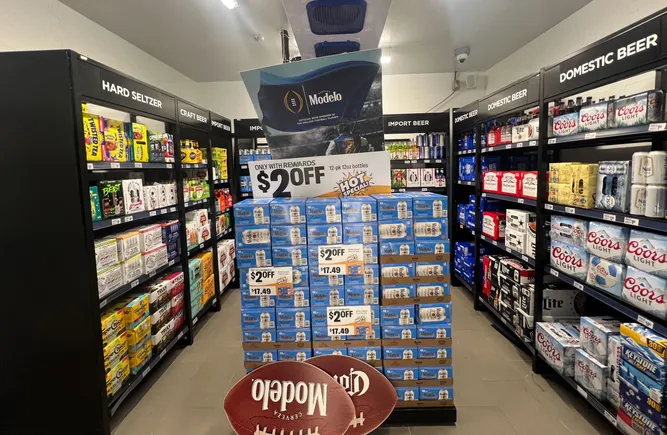Alcohol sales have seen a decline in recent years, but not all parts of the industry are feeling the same level of impact. Some products are experiencing a surge in sales, while others are continuing to lose category share in convenience stores. A Gallup poll revealed that only 54% of Americans currently drink alcohol, with a growing belief that moderate alcohol consumption is bad for one’s health.
Despite this decline, there has been a slight uptick in alcohol consumption in the first two quarters of 2025, indicating a potential rebound in consumer interest. Datassential’s Buzz: Q2 2025 report highlighted this trend, suggesting a shift in drinking behaviors among consumers.
After analyzing data and consulting experts, C-Store Dive identified winners and losers in the convenience store alcohol market. Beer, although experiencing a decline in sales, remains the top-selling food and beverage item in convenience stores. Import and craft beers are seeing some growth, with domestic super premium beers leading the way in sales.
Ready-to-drink alcoholic beverages and canned cocktails have been driving the increase in convenience store alcohol sales. Hard seltzers like White Claw and Bud Light Seltzer have seen remarkable growth, while premixed cocktails have outperformed other alcohol categories. Spirits, especially tequila, have also seen an increase in popularity among consumers.
On the flip side, wine sales have been steadily declining across all retail outlets, including convenience stores. The planned purchase aspect of wine does not align well with the assortment typically found in convenience stores, contributing to the decline in sales. Non-alcoholic wine and beer remain niche categories in convenience stores, despite a growing trend in low- and no-alcohol beverages in other retail channels.
Overall, while some categories are performing better than others in the convenience store alcohol market, it is important not to write off any sub-categories entirely. Consumer tastes and preferences are constantly changing, and new entrants into the market can drive shifts in sales. Alcohol remains a significant category for consumers and retailers, with potential for growth and adaptation in the future.


